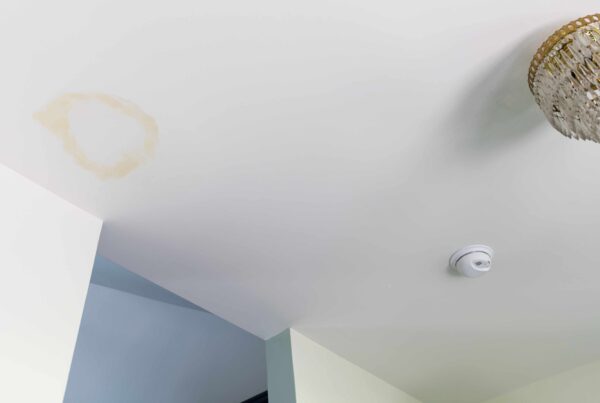Storms don’t always announce the damage they leave behind.
In fact, most storm damage goes unnoticed — until it’s too late.
That leak in your ceiling? It likely started months ago when hail quietly bruised your shingles or wind lifted the edges just enough to compromise the seal.
So how do you know if your roof was hit hard enough to matter? And when should you call in the pros?
Here’s your go-to checklist to spot storm damage before it turns into a costly repair — or insurance denial.
1. Look for the Obvious (But Don’t Stop There)
After a heavy storm, especially one with hail or high winds, take a walk around your home. You’re looking for:
- Missing or lifted shingles
- Visible impact marks (dark spots or bruises on shingles)
- Creased shingles (a sign of wind damage)
- Dented vents, flashing, or gutters
- Granules collecting in your gutters or downspouts
- Leaking or water stains inside your attic or ceiling
Even one or two of these signs could indicate your roof has been compromised. But here’s the catch — a lot of storm damage hides in plain sight.

2. Hail Damage Doesn’t Always Leak — But It Still Counts
This is where homeowners get blindsided.
Hail often causes what looks like cosmetic damage:
- Tiny dark spots
- Slight bruising
- Loss of granules
- Dings in soft metals
But beneath the surface?
That hail strike compromised the integrity of the shingle. Over time, UV rays and water will break it down further — leading to leaks months or even a year later.
By the time you notice water stains on your ceiling, your window to file an insurance claim may have already passed.
3. Wind Damage: Subtle, Sneaky, and Often Missed
Wind doesn’t just rip shingles off the roof — it lifts and breaks the adhesive seal under the shingle tabs.
What does that mean?
Even if they lay back down flat, those shingles are now vulnerable to:
- Future wind
- Water intrusion
- Ice damage in colder months
These shingles may look fine from the ground — but they’re ticking time bombs.
A professional roofer will gently lift shingles to check for broken seals — something a typical adjuster or drone cannot do.
4. Check the Collateral Damage: Vents, Gutters, and Siding
Soft metals tell the truth.
If you see:
- Dented vent caps
- Damaged gutter guards
- Screens with holes
- Dinged downspouts
- Bent window trim or siding
…it’s a pretty good indicator that your roof took a hit, too.
5. Signs Inside the Home: What Your Ceiling Is Telling You
Check your attic and top-floor ceilings for:
- Yellow or brown water stains
- Peeling paint
- Bubbling drywall
- Musty smells
These are clear signs that water is breaching your roof system. It may have taken weeks or months to show up — but that doesn’t mean it isn’t storm-related.
6. Still Not Sure? Get a Free, No-Risk Inspection
The #1 way homeowners lose out on legitimate claims is simple:
They never get the damage documented in time.
Even if you’re not sure there’s enough damage to file a claim, it costs you nothing to have an expert inspect and document it now — and keep the report on file just in case.
Here’s what a professional inspection includes:
- Full perimeter walk
- Roof chalking and photo documentation
- Damage count per test square
- Soft metal and gutter inspection
- Drone footage or video walkthrough (if needed)
- Clear next steps for filing or monitoring
Final Word: Catch It Early or Pay for It Later
Storm damage is like a cavity.
Ignore it, and it spreads — fast.
You might not see a leak today, but if hail or wind compromised your roof last week or last year, your home is already at risk.
Contact us today to schedule a free, no obligation inspection to check for storm damage or any potential issues that could be causing a leak. Click here to schedule online now.

Slade is the Sales Manager at Alfa Y Omega Construction and brings over 24 years of hands-on experience in the construction industry. He’s passionate about helping homeowners navigate the often confusing process of roof replacement and storm-related insurance claims. With a background rooted in both fieldwork and customer service, Slade ensures every client is informed, protected, and treated with integrity. Whether it’s identifying hidden damage or guiding you through a complex claim, his goal is to simplify the process and deliver results. When you work with Alfa Y Omega, you get a team that fights for your home like it’s their own.



